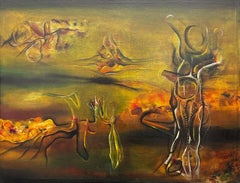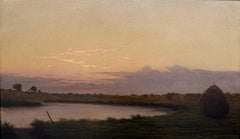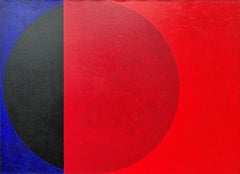Lincoln Glenn Art
1970s Abstract Abstract Paintings
Canvas, Acrylic
1910s American Impressionist Figurative Paintings
Canvas, Oil
1970s Abstract Abstract Sculptures
Textile, Synthetic
1940s Surrealist Abstract Paintings
Canvas, Oil
1850s Academic Landscape Paintings
Canvas, Oil
1960s Hard-Edge Abstract Paintings
Canvas, Oil
1950s Abstract Expressionist Abstract Paintings
Canvas, Oil
1950s Abstract Expressionist Abstract Paintings
Canvas, Oil
1960s Abstract Expressionist Abstract Paintings
Canvas, Oil
1960s Abstract Expressionist Figurative Paintings
Canvas, Oil
1960s Abstract Expressionist Abstract Paintings
Canvas, Oil
1960s Abstract Expressionist Abstract Paintings
Canvas, Oil
1960s Abstract Expressionist Abstract Paintings
Canvas, Oil
1960s Abstract Expressionist Abstract Paintings
Canvas, Oil
1960s Abstract Expressionist Abstract Paintings
Canvas, Oil
1960s Abstract Expressionist Abstract Paintings
Canvas, Oil
1950s Abstract Expressionist Abstract Paintings
Canvas, Oil
1960s Abstract Expressionist Abstract Drawings and Watercolors
Paper, Pastel
1960s Abstract Expressionist Abstract Drawings and Watercolors
Paper, Pastel
1960s Abstract Expressionist Abstract Drawings and Watercolors
Paper, Gouache
1960s Abstract Expressionist Abstract Drawings and Watercolors
Paper, Gouache
1960s Abstract Expressionist Abstract Paintings
Canvas, Oil
1960s Abstract Expressionist Abstract Paintings
Canvas, Oil
1960s Abstract Expressionist Abstract Paintings
Canvas, Oil
1960s Abstract Expressionist Mixed Media
Mixed Media, Board
1960s Abstract Expressionist Abstract Drawings and Watercolors
Paper, Pastel
1960s Abstract Expressionist Abstract Drawings and Watercolors
Paper, Gouache
1960s Abstract Expressionist Abstract Drawings and Watercolors
Paper, Pastel
1960s Abstract Expressionist Mixed Media
Mixed Media, Board
1960s Abstract Expressionist Mixed Media
Paper, Mixed Media
1960s Abstract Expressionist Abstract Drawings and Watercolors
Pastel, Watercolor, Board
1960s Abstract Expressionist Abstract Drawings and Watercolors
Paper, Pastel, Gouache
1960s Abstract Expressionist Abstract Drawings and Watercolors
Paper, Gouache
1870s Academic Animal Paintings
Canvas, Oil
1950s Modern Figurative Paintings
Masonite, Oil
1950s Modern Figurative Paintings
Canvas, Oil, Board
1970s Abstract Abstract Drawings and Watercolors
Paper, Gouache
1920s American Impressionist Figurative Paintings
Canvas, Oil
1960s Color-Field Abstract Paintings
Canvas, Ink, Watercolor, Rice Paper
1970s Abstract Geometric Abstract Paintings
Canvas, Acrylic
1980s Abstract Abstract Paintings
Canvas, Oil
1980s Abstract Geometric Abstract Paintings
Canvas, Oil
1940s Outsider Art Figurative Paintings
Canvas, Oil
1950s Abstract Abstract Paintings
Canvas, Oil
1970s Surrealist Abstract Paintings
Canvas, Oil
1860s Impressionist Figurative Paintings
Canvas, Oil
1960s Abstract Expressionist Abstract Paintings
Canvas, Oil
1950s American Impressionist Figurative Paintings
Oil, Board
Mid-20th Century Abstract Expressionist Abstract Paintings
Paper, Crayon
Early 20th Century Modern Figurative Drawings and Watercolors
Paper, Watercolor
Early 20th Century Modern Figurative Drawings and Watercolors
Paper, Crayon, Pencil
1980s Academic Portrait Drawings and Watercolors
Paper, Watercolor
1940s Abstract Expressionist Abstract Drawings and Watercolors
Paper, Oil, Watercolor
1960s Abstract Expressionist Abstract Paintings
Canvas, Oil
1970s Post-Modern Abstract Paintings
Canvas, Oil, Acrylic
1940s Abstract Expressionist Figurative Paintings
Canvas, Oil
1950s Abstract Expressionist Abstract Paintings
Canvas, Oil
1970s Abstract Mixed Media
Board
1970s Abstract Expressionist Abstract Paintings
Canvas, Oil
1840s Hudson River School Figurative Paintings
Canvas, Oil





